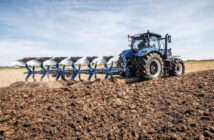Details of an ambitious AHDB-funded programme of coordinated cover crop trials were announced earlier this year. Now the first annual project report has been published, which outlines the initial findings.
Led by ADAS, the work looks to quantify the longer-term effects of cover crops, as straights and mixtures, and assess the impact of cultivation, establishment and destruction techniques.
Conducted over three years, the field experiments build upon recommendations from our cover crop review and capitalise on the AHDB Monitor Farm network.
Early results: Large plot trials
Over the course of the project, three large plot trials (on contrasting soil types) will quantify the effect of ten cover crop treatments (seven straights and three mixtures), established using a standard cultivation approach, on soil properties, crop rooting and yield.
The first trial was established on a sandy soil in Cambridgeshire in autumn 2016. The greatest cover was achieved by oil radish, phacelia and a mix comprising these two species and buckwheat (despite the buckwheat being destroyed by frost by mid-December). The greatest root length/surface area, however, was produced by a rye cover crop.
Cover crop biomass and nitrogen uptake was low for most treatments (<0.5t dry matter/ha and <5kg/ha N uptake). Oil radish and phacelia, however, performed better (<1t/ha dry matter/ha and <10kg/ha N uptake), most likely due to late establishment (21 September 2016) and a dry winter.
There was no significant difference in soil penetration resistance, bulk density or moisture content following the different cover crops but spring barley establishment was lower following the rye cover crop, possibly due to allelopathy.
Early results: Tramline trials (Monitor Farms)
Validation tramline trials, which compared two mixes with an uncovered control, were established at Monitor Farms in Kent and Yorkshire. As in the large plot trial, the mixes containing phacelia and oil radish gave rise to greater cover (compared to a mix containing oats and clover) and led to lower soil penetration resistance (compared to the uncovered control).
Two further tramline trials, which looked at the performance of an oil radish, phacelia and buckwheat mix, were established at a site in Cambridgeshire using either conventional disc/tine or a strip tillage approach. Establishment was better following strip tillage, probably due to improved seed placement and soil moisture.
Cover crop guidance
As findings are based on a single year, care should be taken when interpreting these early results. The full project findings, due in 2019, will be used to update AHDB guidance on cover crops.
It is also anticipated that the project will help steer the development of bespoke cover crop seed mixtures more able to root more deeply and extensively.
Project information, as well as the cover crop review, videos and case studies, can be accessed at cereals.ahdb.org.uk/covered




